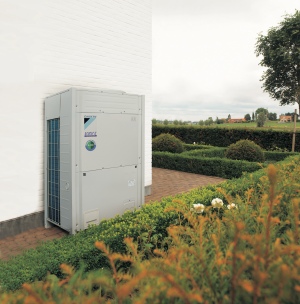Refrigerants as a continuing issue

Against the backdrop of R22 eventually about to be totally phased out in Europe and pressure growing on HFC refrigerants, Mike Nankivell of Space Airconditioning shares some personal recollections and observations — with some thoughts for the coming decade.
The last 10 years has presented many interesting and challenging situations for the UK HVACR industry as a whole — quite apart from the impact of a relatively deep and lengthy recession. Product development and innovation has continued at a time when the industry might have been forgiven for reducing investment in R&D. UK and EU regulation and directives have also kept us on our toes! We have also become accustomed to terms like ozone depletion, global warming (Whatever happened to global dimming? [Google it — Ed.]) and climate change, which have had implications for all of us in the past decade.
10 years ago in 2004, we saw the final ban on the manufacture and sale, within the EU, of any new air-conditioning, refrigeration or heat-pump equipment designed to use HCFC (R22) refrigerant.
Our industry had been preparing for that day for some time. However, owing to limitations in available compressor technology, it had been forced to use the interim HFC refrigerant blend R407C in many applications that had previously used R22. Again, it was around 2004 that we finally began to see R410A emerging as the manufacturer’s refrigerant of choice across a broader range of products.
Around the same time, Daikin was the first manufacturer to switch to R410A in all its direct-expansion products and launch the world’s first R410A-operated variable-refrigerant -low system with its long-awaited second-generation VRVII range. In 2005 the VRVII range was further extended to include a water-cooled VRF variant.
It was in 2005, that an intriguing concept based on Daikin heat-pump technology, first appeared in France — a conventional Daikin air-source heat-pump condensing unit connected to a ‘box’ that looked like a typical central heating boiler.
A year later in 2006, the now familiar Daikin Altherma air-to-water heat pump was launched onto the UK market as a renewable-heat alternative to the fossil-fuel combustion-based central-heating boiler for homes. Today this is a very high-profile domestic market attracting significant growth and initiatives such as the Renewable Heat Incentive.
In 2006 there was a radical review of the Part L Building Regulations, now incorporating many of the requirements laid down by the European Commission’s Energy Performance in Buildings Directive (EPBD). The revised regulations introduced us to SBEM the Simplified Building Energy Model, essentially a database to assist designers to reduce the carbon footprint of commercial buildings. Since then we have had two further revisions to the regulations in 2010 and 2013.
It was also in 2006 that we first saw the final proposals for the F Gas Regulation, which came into effect in 2007. Initially focused on European targets for reducing emissions of greenhouse gases, the F Gas Regulation introduced mandatory new minimum training qualifications for those involved in work ranging from refrigerant leak detection to installing servicing, maintaining and decommissioning equipment designed to contain HFCs and various other containment and reporting measures. The subsequent review process is set to introduce a gradual phase down of HFCs between 2016 and 2030, along with some selective bans.

In 2009 the then Government announced a new initiative designed to stimulate the adoption of renewable heat technologies — the RHI or Renewable Heat Initiative. This has been the subject of much publicity but not much real progress until quite recently.
As for next 10 years — well I don’t have crystal ball, but already work has commenced on the 2016 revisions to the Part L Building Regulations — driving towards zero carbon buildings.
The Energy Related Products Directive will, I suspect, have a significant impact on commercial air-conditioning manufacturers in the coming years, and I have no doubt that some elements of the F Gas review will prove difficult to implement.
We can look forward to technology developments in products that use HFCs with low global-warming potentials and alternative refrigerants, as this will become a major objective to counter the HFC phase down.
Hopefully our industry has turned the corner out of recession and over the next few years we can begin to see a return to pre-2007 levels of business at long last. I have no doubt that energy efficiency will continue to be the principal driver for the benefit of the end user in terms of operating costs and the environment in terms of reduced greenhouse-gas emissions.
Mike Nankivell is marketing director of Space Airconditioning.







